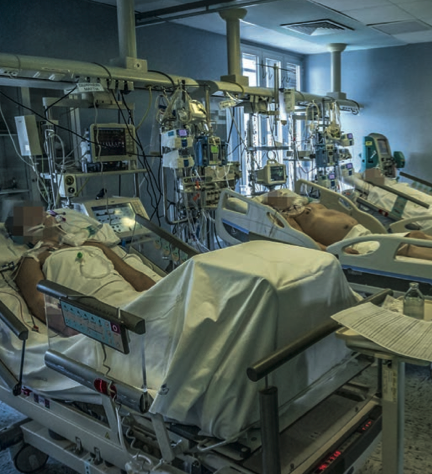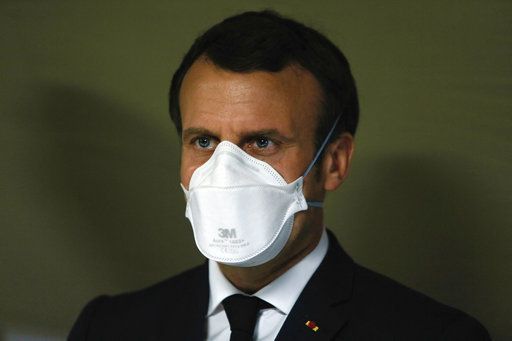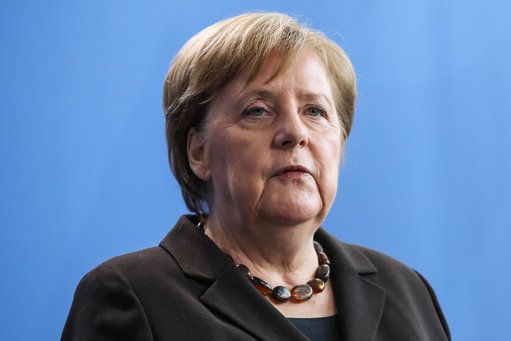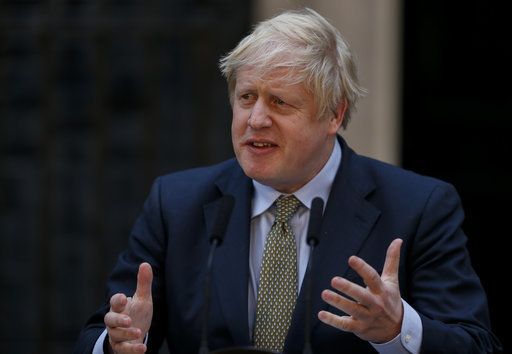
It is a virus that affects the typical patient for a matter of days, and yet the response we have settled on is going to affect us for decades. After an initially shambling and sluggish reaction in western capitals to the turn-of-the-year news that a novel virus was at large in China—which in the case of President Trump continued well into March (“the virus will not have a chance against us”)—most political leaders abruptly pulled a screeching handbrake turn. With scarce dissent or even discussion about the long-term consequences, they began jostling to avoid being outdone in the resolution stakes. Never has Lenin’s maxim—about decades where nothing happens, and weeks where decades happen—been more apt. In country after country, there was a lurch within days from “advice” about washing hands and avoiding big crowds, through to requests to work from home, then the closure of schools and all other public facilities, and then finally an order to stay at home and bolt the door.
And this is only the most obvious element of the response. Barely noticed, amid the dramatic changes to day-to-day life and the gathering collective fear, has been the fastest and most fundamental recasting of economic policy since... when? The Bolshevik revolution, perhaps. Even wartime restrictions and mobilisations arrived more gradually, and while the global financial crisis of 2008 certainly turned the unthinkable into received wisdom pretty fast, it did not do so without a whole lot of (sometimes time-consuming) argument.
Recall how it took many months for Alistair Darling and Gordon Brown to move from a neurotic New Labour reluctance to nationalise the collapsing Northern Rock in 2007, towards making the bold move towards buying up big stakes in the big banks. This time, by contrast, a Conservative government has almost immediately jettisoned anything it ever believed about free markets and “sound” public finances by locking down swaths of the economy, and then at the same time committing the taxpayer to foot up to 80 per cent of all the wages no longer being earned. The state is taking control with such speed that moves which in other circumstances might make for weeks of controversial headlines, such as the de facto re-nationalisation of the railway system, are hurtling by without registering.
As for the government deficit, after a decade of our economy being run on the basis that it was the only number that mattered, it has now suddenly been decided that it couldn’t matter less. Rough calculations by the Financial Times’s economics editor, Chris Giles, suggest that the mere seven days of announcements after Rishi Sunak’s first (and supposedly coronavirus-busting) budget could, together with the new fall in tax revenues, immediately push the budget projection for a 2.4 per cent GDP overdraft up to the same 10 per cent seen at the height of the financial crisis. And Giles told me that if (nominal) national income takes a serious dive, it is perfectly “plausible” that the national debt could hurtle to over 100 per cent of GDP this year.
And it’s not just Britain. Recall that George W Bush’s bank-rescue programme in 2008, the so-called Tarp, was not initially greenlit but given a “revise and resubmit” by Capitol Hill; subsequently, every last dime of Barack Obama’s stimulus bill was haggled over. Its total cost was eventually estimated to have been $831bn. This time various Congressional schemes in the $1 trillion to $1.5 trillion range were soon overshadowed by the administration’s talk of something more like $2 trillion.
Why? Long before the end of March, the OECD secretary general, Angel Gurría, was warning that the gathering global slow-down was already bigger than the supposedly once-in-a-lifetime catastrophe of 2008-9. The slump in the real economy flowed not from the pandemic itself, but from the policy response, and yet it set in train a third crisis—in the financial markets. Sudden downward revisions in expectations for profit transformed into a sell-off of shares that bore comparison with the Wall Street Crash of 1929. In the 40 days up to 23rd March, when I happen to be writing, the FTSE 100 was down by just over one third. Enter the Bank of England, which not only cut rates to a new record low of just 0.1 per cent, but also set the electronic printing presses whirring just as energetically as at any point during the financial crisis. The March 2020 bout of “quantitative easing” was £200bn, immediately matching the largest dose administered during the great recession, which had followed months of discussion. And things have been just as frenetic for the Fed in Washington and the ECB in Frankfurt.
The inevitable inquiry
As I type these words, it can still seem surreal that these seismic changes have happened so quickly, and with so little debate. By the time you read them, though, there is a possibility that NHS hospitals will be enduring the gravest humanitarian emergency in health service history. An appalling cruelty is already playing out in the corridors of admired hospitals in the prosperous and well run north of Italy. The UK has fewer ventilators and intensive care beds than most of Europe, and doctors could soon be forced to make repugnant choices, with some patients—perhaps very many patients—potentially being left gasping for breath without the life support they would normally expect, and left to die in enforced separation from the relatives who would in ordinary times be holding their hand. Across the Atlantic, whatever the eventual caseload will be, a healthcare system that is both monstrously unjust and ruinously fragmented is likely to worsen the human toll.
So it is not hard to understand why politicians lurched from complacency to assuming command economy powers with such speed. Humanitarian emergencies are not something any first-world country is used to, and their leaders will be judged to have blood on their hands if one arrives and they failed to do everything in their power to stop it. I, for one, am grateful to live in the sort of country where they feel this pressure keenly.
But there are human consequences, too, that follow from the decisions they have made, including the unprecedented decision to invite what looks like it will be a severe recession. And our leaders will—eventually—also have to answer for those. How difficult will this second set of questions about the lockdown turn out to be? It depends on exactly how deadly the virus proves. For the moment, a thick fog of uncertainty, whose character John Kay and Mervyn King interrogate in this issue, shrouds the answer.

The brute politics may play out paradoxically. If the public health policy falters, and full use has to be made of the pop-up mortuaries described in macabre news reports, then the failure to protect the public will be the only thing anyone is concerned about. But if the policy is successful enough to keep the toll within the range the public is primed for then the voters, who rarely “do gratitude,” may soon be less interested in the disaster avoided, than the economically poisonous effects of the chosen treatment. While a public inquiry is inevitable, then, it is impossible to get ahead of the game and run the exercise in advance, or to know for sure whether it will be focused purely on whether too little was done to save lives in the emergency. Or whether instead there will also be difficult questions regarding whether all concerns about livelihoods and the future were thrown out of the window too quickly.
A stitch in time
The speed of the policy swing has been the most breathtaking aspect of recent weeks, but in retrospect it will not appear so puzzling. For while much is only half-known about Covid-19, we do know it is a new disease in humans, which nobody’s immune system has any experience of, and that consequently there is at least the potential for it to spread through a population like wildfire.
By the early spring we could also already see from a number of East Asian societies—South Korea (see Jean H Lee), Japan as well as China itself—that various mixes of rapid lockdowns, mass testing and mass surveillance could slow the spread materially. Looking at these relative success stories, compared to the unfolding catastrophe in some European hospitals, we can see one obvious question for when the time comes to rake over the coals. Namely, why didn’t you move faster? No politician will want to be without an answer to that.
There will be other questions about a lack of preparedness over a longer period. Think of Britain’s dearth of ventilators and intensive care beds, a reflection no doubt of an “efficient” drive to eliminate “surplus” capacity from the system. But it is now plain that this was a false economy—cutting the NHS more slack on the deficit in years gone by to retain that spare capacity would not only have avoided some of the current panic and the suffering that looms, but also some of the huge knock-on effects on the public debt. And better stocks of protective equipment for medical staff, some of whom enter this crisis feeling scared and exposed, could have been bought for relatively trivial sums. What aggravates the culpability is that the arrival of a pandemic is not (quite) a bolt from the blue, but rather a threat about which many have long warned. At the start of December—before there was a single reported Covid-19 case anywhere in the world—Prospect asked assorted big brains for a big idea for 2020, and the historian Peter Frankopan identified “a plan for pandemics” as his top priority.

Beyond the old adage about a stitch in time saving nine, it is impossible to guess what lessons will be ultimately distilled before we know the scale of the human disaster. There is wild and baffling (apparent) variation in the mortality risk across different national borders—as I write, 9 per cent of those confirmed to have coronavirus in Italy have died, 30 times more than the mere 0.3 per cent mortality rate being reported in Germany. There is every reason to expect that much of this vast difference will be revealed as a measurement error—a reflection of cross-national differences in the sorts of patients who get tested, and in customs about assigning the cause of death. But just how much of the difference will be explained away, and just how inflated is that scary Italian statistic? Until we know that, the prospective toll is simply unknowable.
[su_pullquote]"The epidemiology is still unfolding. But the grim economics of the treatment is clear" [/su_pullquote]
A great deal turns on the peak of infections, and whether it can be kept at any sort of manageable level. But here very modest differences in one or two parameters can have overwhelming effects. In a piece for our website, the number-crunching journalist Michael Blastland contrasted two seemingly-similar hypothetical scenarios. In the first, where each case of new disease X infects two others in seven days, the number of infections hits 2,000 after 10 weeks; in the second, each case infects three others in five days, and the total rockets towards 10m in the same period. But with a new virus, the estimates about things like onward infection are imprecise and being revised all the time, which leaves everything up in the air. By far the most influential study in the UK has been an Imperial College paper that saw Downing Street swing from mitigation and “herd immunity” to a more determined strategy of “suppression.” It postulated—and given the dynamics here nearly everything is postulation, since huge margins of error attach to the best science—that 500,000 deaths might have come about in the event of no government action, and that this might be halved to 250,000 by the government’s initial response. Which still sounds like a hell of a lot.
If, as the government hopes, that (estimated) 250,000 can be brought down to something like 20,000, that is obviously a huge difference. Instead of a number that is in the same ball-park as Britain’s annual troop losses during the First World War, we would have a total of the same order as the official tally of “excess winter deaths” that national statisticians produce every year, by subtracting the ordinary rate of mortality in other months from that encountered between December and March. From the (rather inhuman) perspective of demography, then, a successful scenario might look less like total war than the country enduring two winters in a row.
The abject uncertainty about the number of the losses is only the start of it because we can only guess at what meaning will settle upon them. Societies do not react to all deaths equally. The total number of fatalities on 9/11 was, at just under 3,000, less than half the losses Italy had already recorded from coronavirus at the time we went to press. And yet these losses were sufficient to provoke the United States into unleashing wars of revenge that would, on most estimates, ultimately cost the lives of well over 100 times that number of people. Now contrast the 9/11 number with, say, the approximate 50m killed worldwide by the so-called Spanish flu of 1918-9. It has generally been remembered as little more than a footnote to the First World War, even though it in fact killed many more people. The mis-match in the reaction can be so extreme as to bear out Stalin’s cold appraisal that while the death of a single man is a tragedy, the death of a million is just a statistic.

One consideration that may affect how heavily the coming Covid-19 deaths weigh on the collective consciousness could be how dramatically lives are cut short. The steep age-gradient of the deaths, as well as the now routine—if vague and rather contemptuous—formulation that victim X “had an underlying condition,” both suggest that the answer will often be “not all that much.” Demographically, the virus will often be more of an accelerating catalyst of death, as opposed to a fundamental cause. There are roughly 600,000 deaths in the UK annually, and the Imperial study did not attempt to identify how many of the coronavirus deaths it projected would already have occurred within the 12-month period. Some proportion certainly would, perhaps a significant one, although that will be cold comfort to families who now face the cruel and unusual trauma of being separated from dying elderly parents, or indeed that smaller proportion who face losing relatives many years or even decades before their time.
Lasting scars
While the epidemiology of this novel pathogen is still unfolding, the economics and the sociology of the recessionary treatment we have chosen to answer it with is much more familiar. As I documented in my book Hard Times, about the social fallout from the financial crisis, we have a wealth of evidence that demonstrates how worklessness and financial exposure translates into anxiety, depression and the shrivelling of community life. By contrast with the so-called Great Recession of 2008-9, this new and potentially greater one looks likely to do for more jobs: the first round of damage is concentrated in labour-intensive sectors, such as hospitality. On the other hand, more encouragingly, there does appear to be a willingness to shore up the social safety net this time.
One of the main lessons of the banking crisis, and the long history of recessions before it, is the tendency of the social effects to settle into lasting scars. Britons who were laid off in the first half of their working lives, I reported in the book, went on to enjoy only around half the number of links into their community at age 50 as their more fortunate contemporaries. This stuff really matters: Robert Putnam of Harvard, the celebrated scholar of American community life and author of the best-selling Bowling Alone, insists that isolation is just as powerful a predictor of early mortality as smoking cigarettes. And this time around, the danger of atomisation could be super-charged by the direct effect of the order to “self-isolate” which kicks in even before the slump bites. It is evident, too, from studying past recessions that the children of the unemployed will be much more likely to end up without work themselves.
That enduring human misery could be produced by passing economic difficulties seems remarkable. But in the last few years we have come to see the life-and-death implications of financial frailty more clearly, thanks to the work of economist Anne Case and Nobel laureate Angus Deaton on “deaths of despair”—work the pair have set out in a recent essay in Prospect. Heavily concentrated among the downwardly-mobile demographic of poorly-educated white Americans, these losses from suicides, drug overdoses etc are—in marked contrast to the coronavirus—striking each passing cohort at a younger age. Who is to say how far a deep recession, and potentially subsequent years of austerity and/or disruptive inflation as nation states struggle to pay the bills, may further ramp up such fatalities?
The official tally of deaths of despair in the US was 150,000 in 2017, around 5 per cent of all American deaths that year, and as such of the same order as the 3 per cent or so of British deaths that will be triggered by the coronavirus if the government were now to succeed in its ambition to keep the toll at 20,000.
[su_pullquote]"Austerity was followed by rising infant mortality"[/su_pullquote]
That, of course, is one almighty if. But if the eventual losses are on that scale, the magnitude of the material resources marshalled to contain them will stand in contrast to the que sera sera indifference with which America has until now answered the human toll of its variety of capitalism. Even in Britain, which has not thrown the poor to the dogs in quite the same way, the reigning “there is no alternative” logic of austerity has now been followed by stalling life-expectancy, rising death rates in many younger age groups, and a widening longevity gap between rich and poor areas, as well as an upward tick in infant mortality.
Now, for the sake of lives that are mostly at the other end of the age range, all sorts of alternatives to austerity have been dreamed up in haste. Some of the weapons that have been deployed against the virus could dog the more vulnerable members of younger generations for decades—school closures, in particular. In the very different context of sub-Saharan Africa, cohort studies have identified disrupted education as something that can have profound and enduring social effects, for example on female fertility. A great deal, of course, will depend how long the schools are shut. But social mobility analyst Lindsey Macmillan has already highlighted how this summer’s move from actual exams to “predicted” exam grades for university entry could scupper the hopes of some poorer pupils who would have attained highly but whose achievements are systematically under-predicted. Locking schools for even a few months, then, could permanently close doors to a brighter future for some.

Managing the distributional consequences of the lockdown is not some optional extra that can be dispatched with once the immediate crisis has past. It is an essential precondition, and the effort must be sustained—just as the grim consequences of the engulfing slump will be—for a long time ahead.
For whom the bell tolls
For all the inconsistences in the way we weigh life and death, at an emotional level I am still drawn to the argument made by the eccentric vicar Giles Fraser. He wrote recently: “Remember the divisions over Brexit? Remainers fantasising about the deaths of elderly Leavers? We thought we were going to be divided for years. But the virus has brought us back together. At a time of real crisis, we remember our deeper solidarity.” This time—unlike many other times—the quick and collective decision seems to have been to put overriding emphasis on the saving of life today, even if that means forgetting quality of life until tomorrow. For all the costs of the lockdown, there is a redeeming nobility to that.
It feels too crude—and perhaps just wrong—to insist on analysing the relative costs and benefits of the drastic decisions made amid a human emergency. It is reminiscent of those debates in health policy about just how skewed resources are to the dying—£1 in every £10 spent in English hospitals, for example, is devoted to patients in their last year of life. In the abstract, the argument is always that one could do more for human happiness by spending more on frequently-rationed things (think of IVF) earlier on in life. And yet as soon as the question is concrete, and it concerns you or your elderly parent, the edge of the mortal coils feels like a place where society owes us each a special obligation. The cold currency of QALY, or quality-adjusted life years, is out of kilter with more traditional moralities and the whole logic of traditional wars, according to which it was incumbent on the young to stand ready to make huge sacrifices to defend the old. Perhaps our response to coronavirus is best understood as a reversion to that way of thinking.
If we had gone the other way and taken our chances with the virus, then—perhaps—there could have been serious economic consequences, particularly if there had been an even more panicked response a little further down the line. Even now, if the lockdown is less than successful, there could be serious implications for what Nigel Lawson dismissively described as “the closest thing [the English] have to a religion,” the NHS. If ventilators didn’t exist, that would be one thing; but seeing as they do, then everything we have ever been told about the health service being “there for us” depends on them being available. Our collective faith could be shattered if they are instead denied to thousands of patients. The damage done to our collective sense of security may not register in cost-benefit analysis, but it could be another lasting scar on the psyche of the nation.
And yet. We now confront not only an unprecedented disease, but also the unprecedented test of a policy-induced recession. Back in 1918, there was of course not the same science with which to confront the Spanish flu, but another reason nothing this bold was tried was that in a much poorer world people couldn’t afford to sacrifice so much of their livelihood, even in order to protect millions of lives. Let us hope that the numbers do not transpire to be as grim as many of the predictions. But even if they don’t—perhaps especially if they don’t—there will still need to be an inquiry. And it will not only be concerned with what will by then be a past pandemic, but with the enduring damage done by the shock therapy that we used to treat it.













